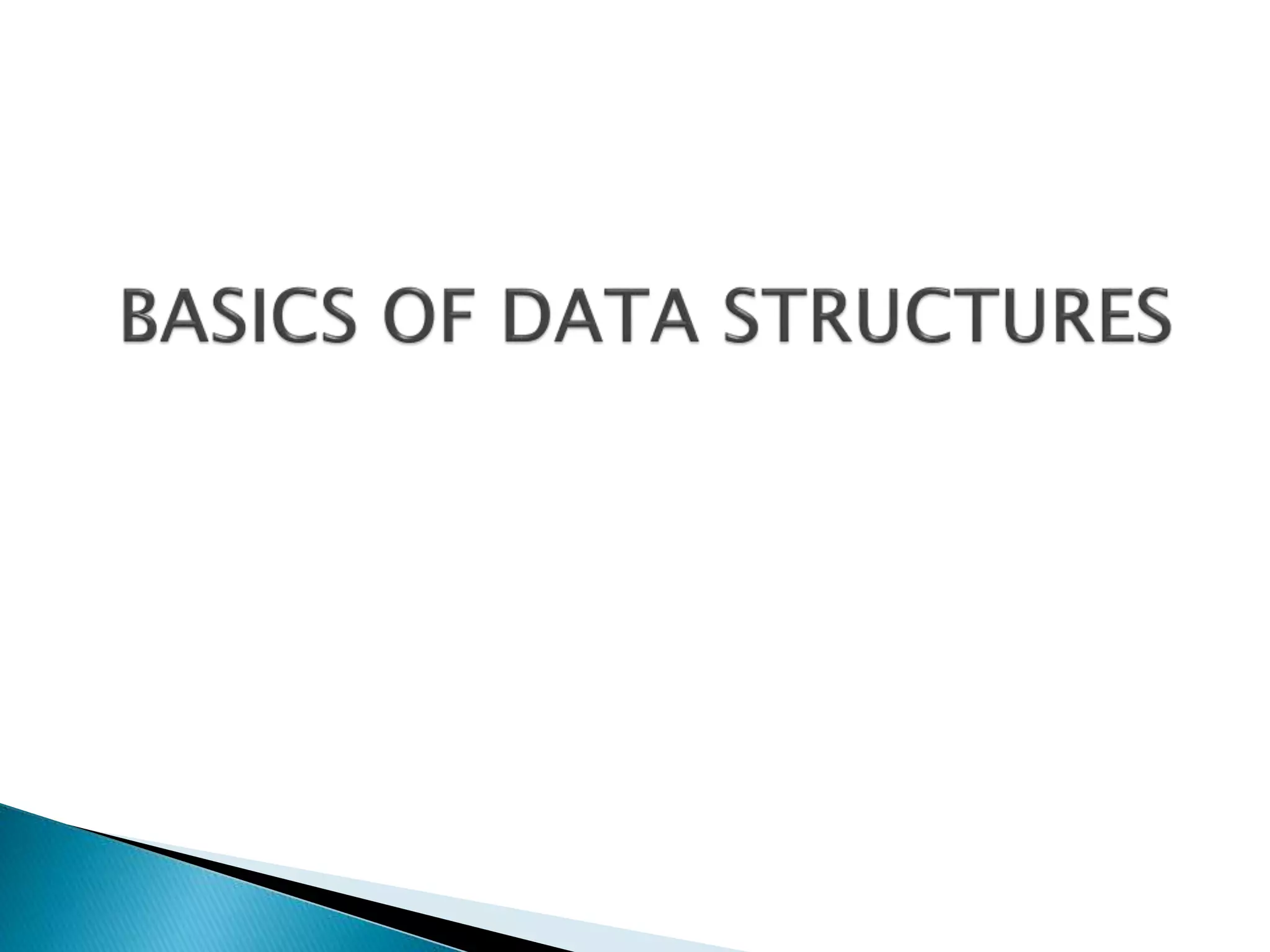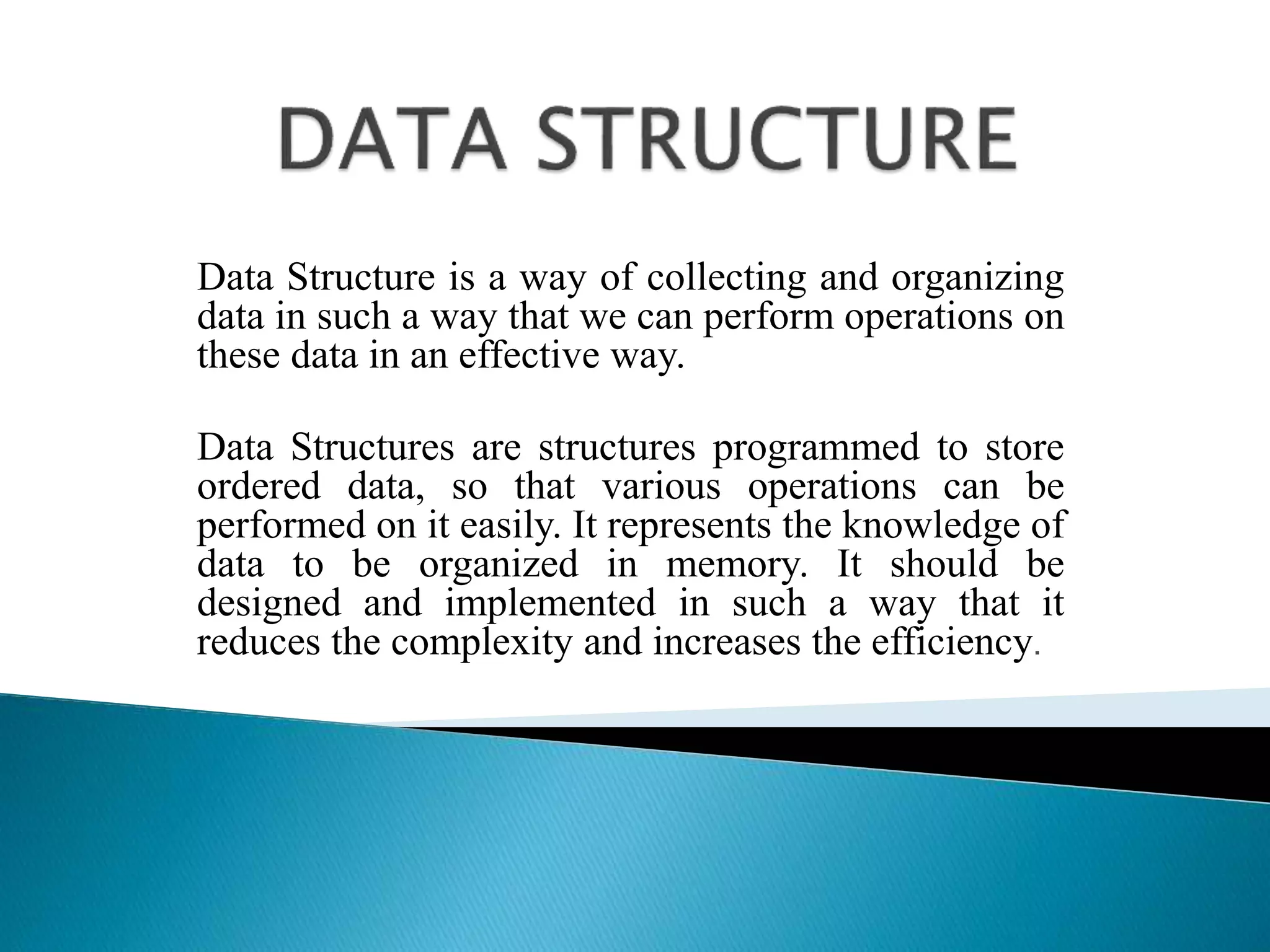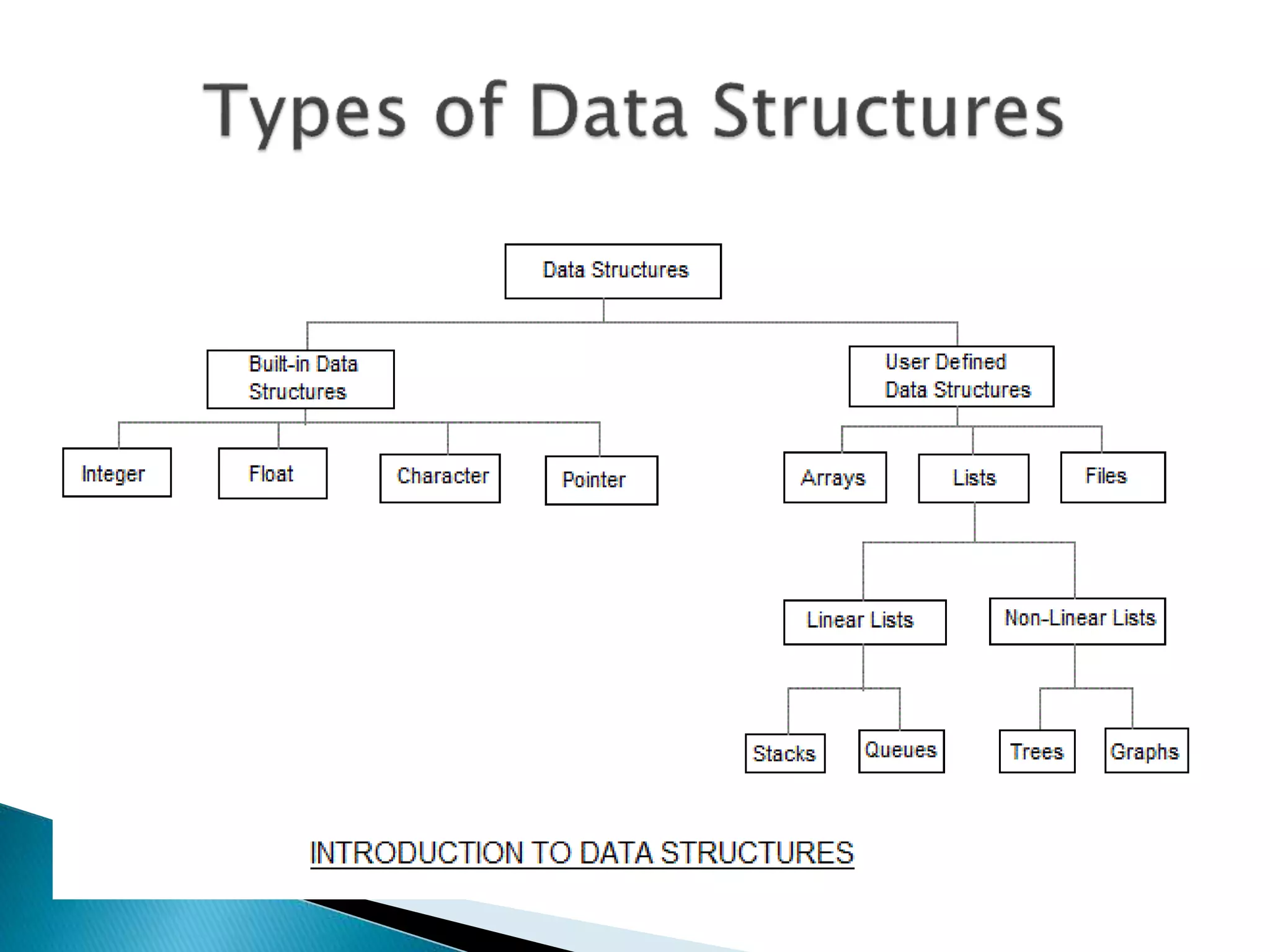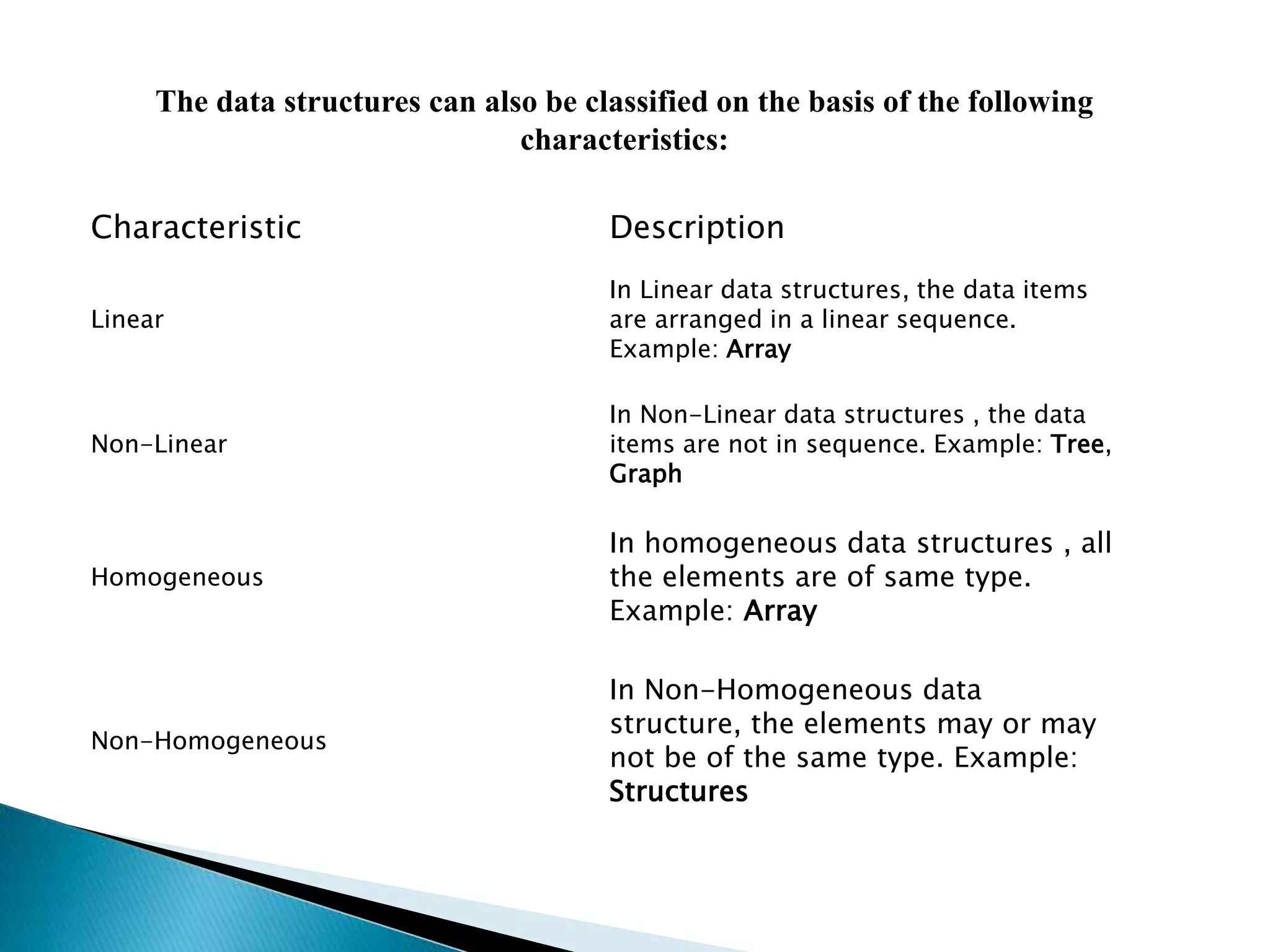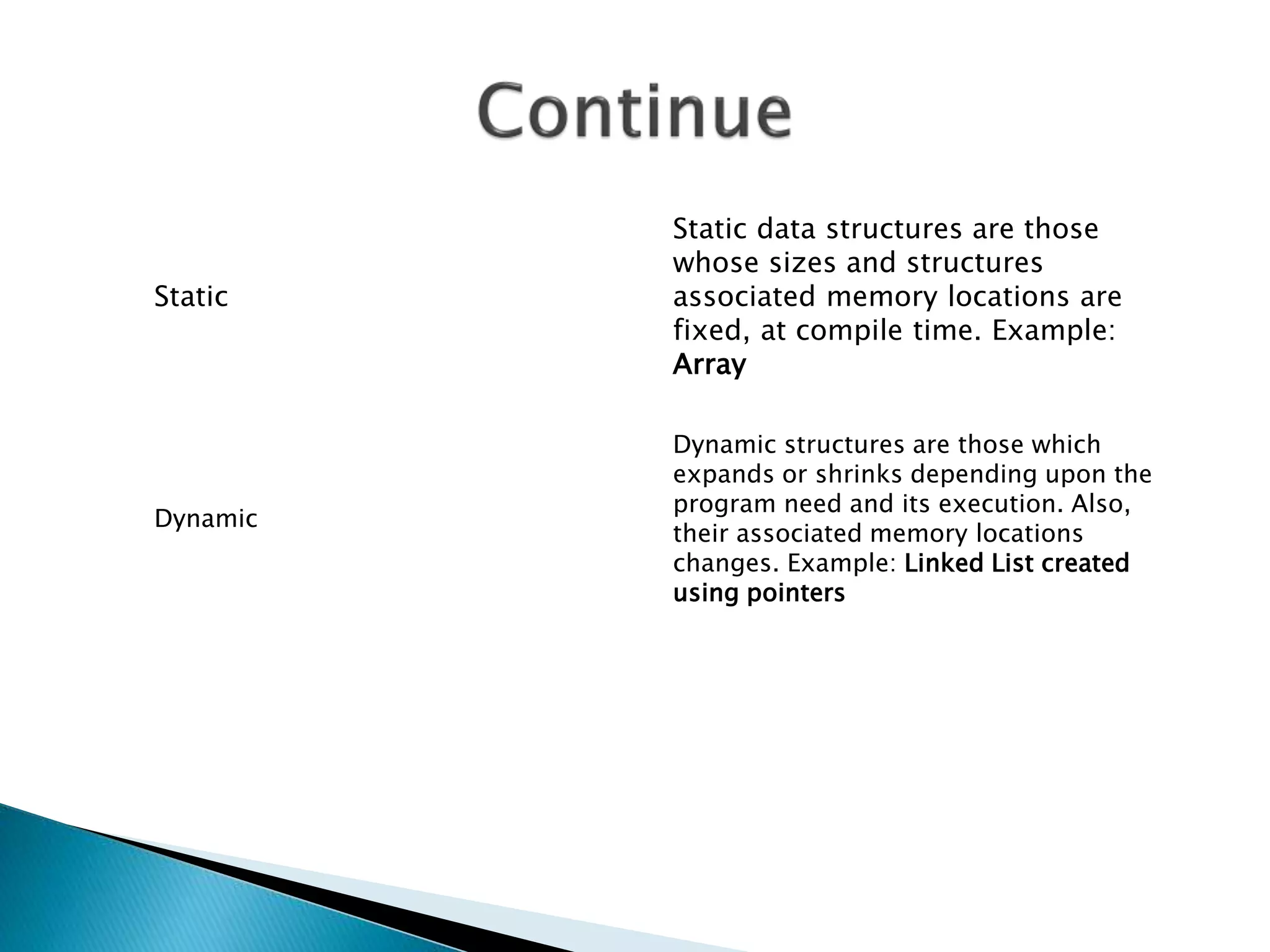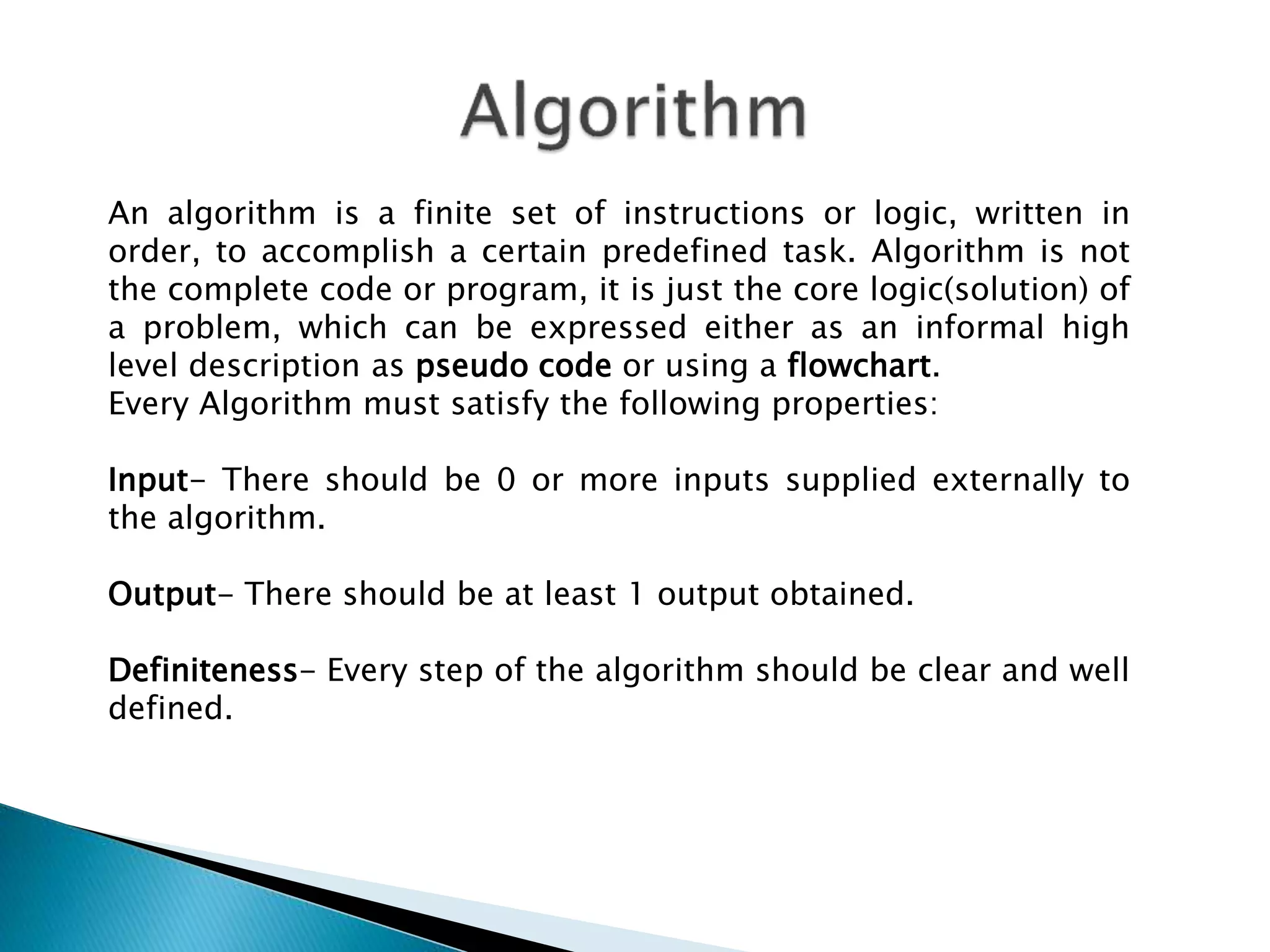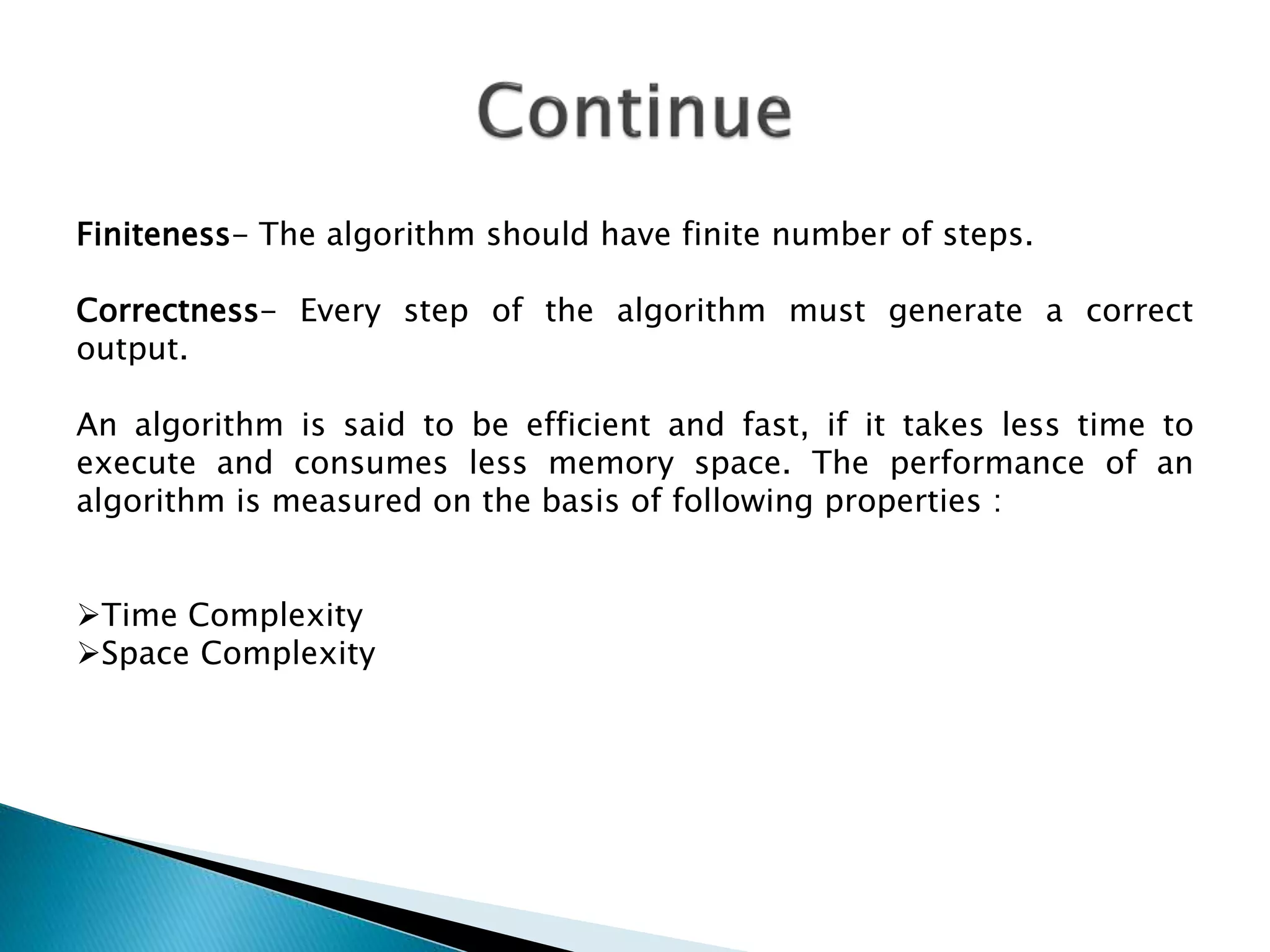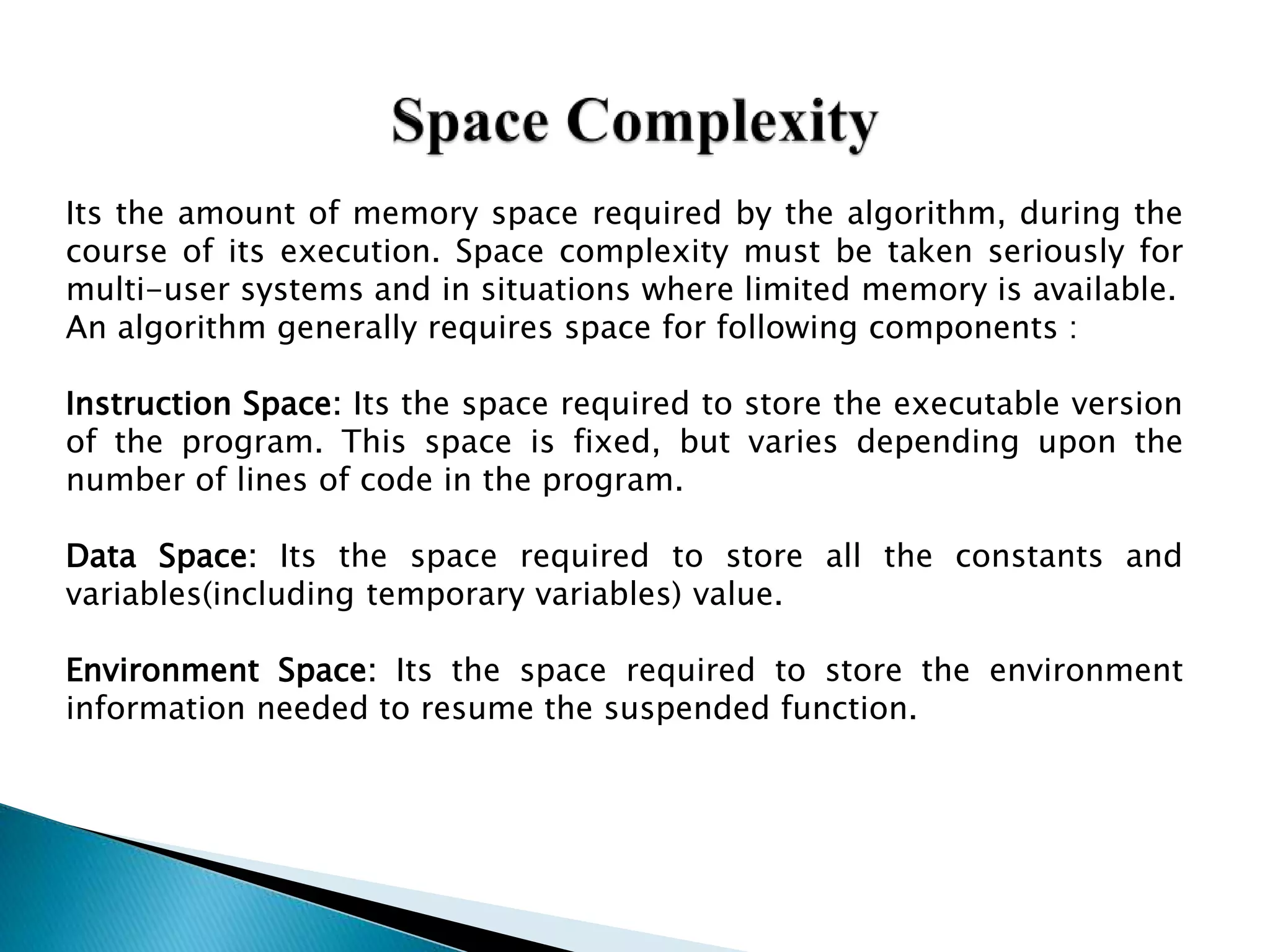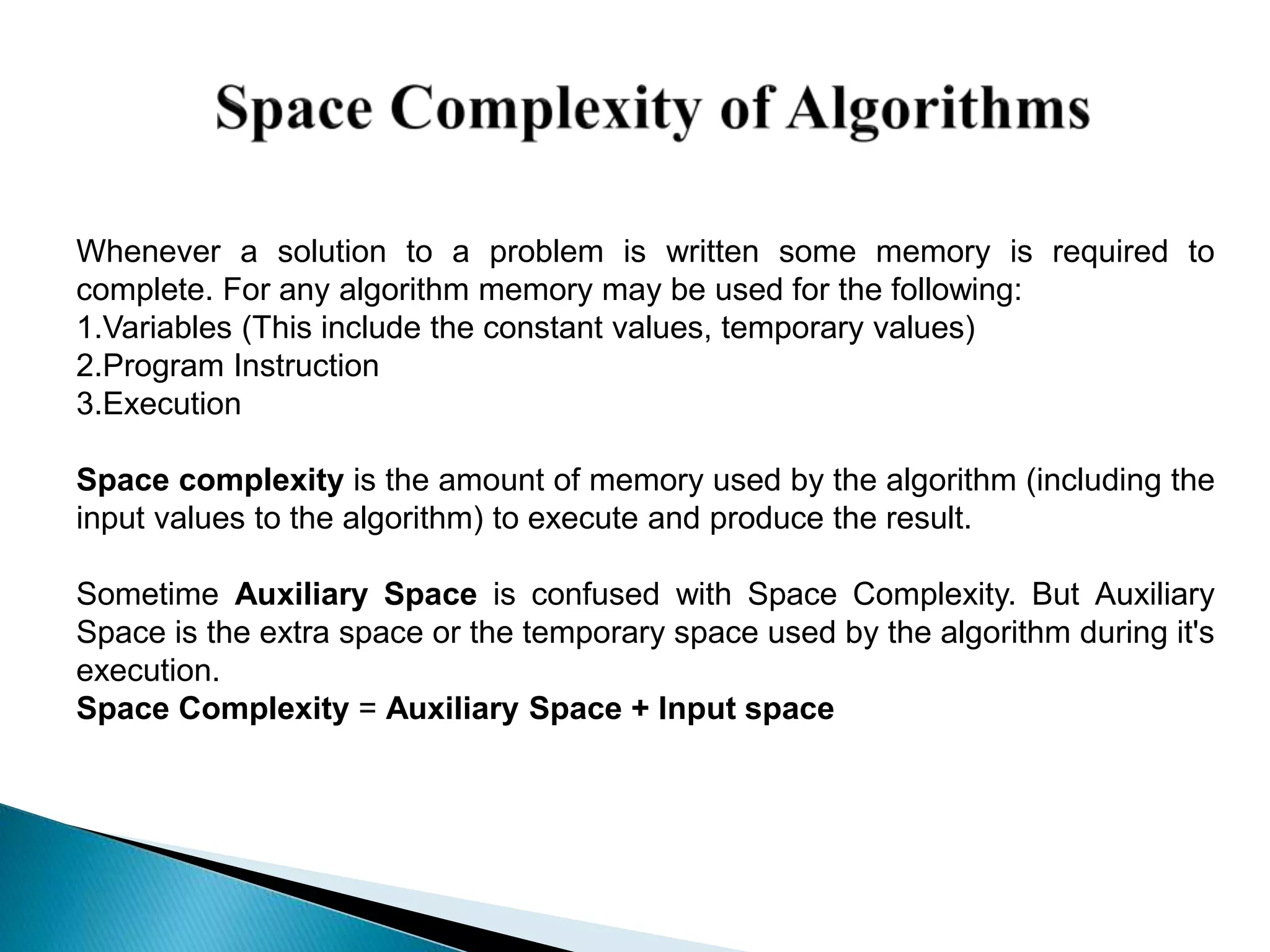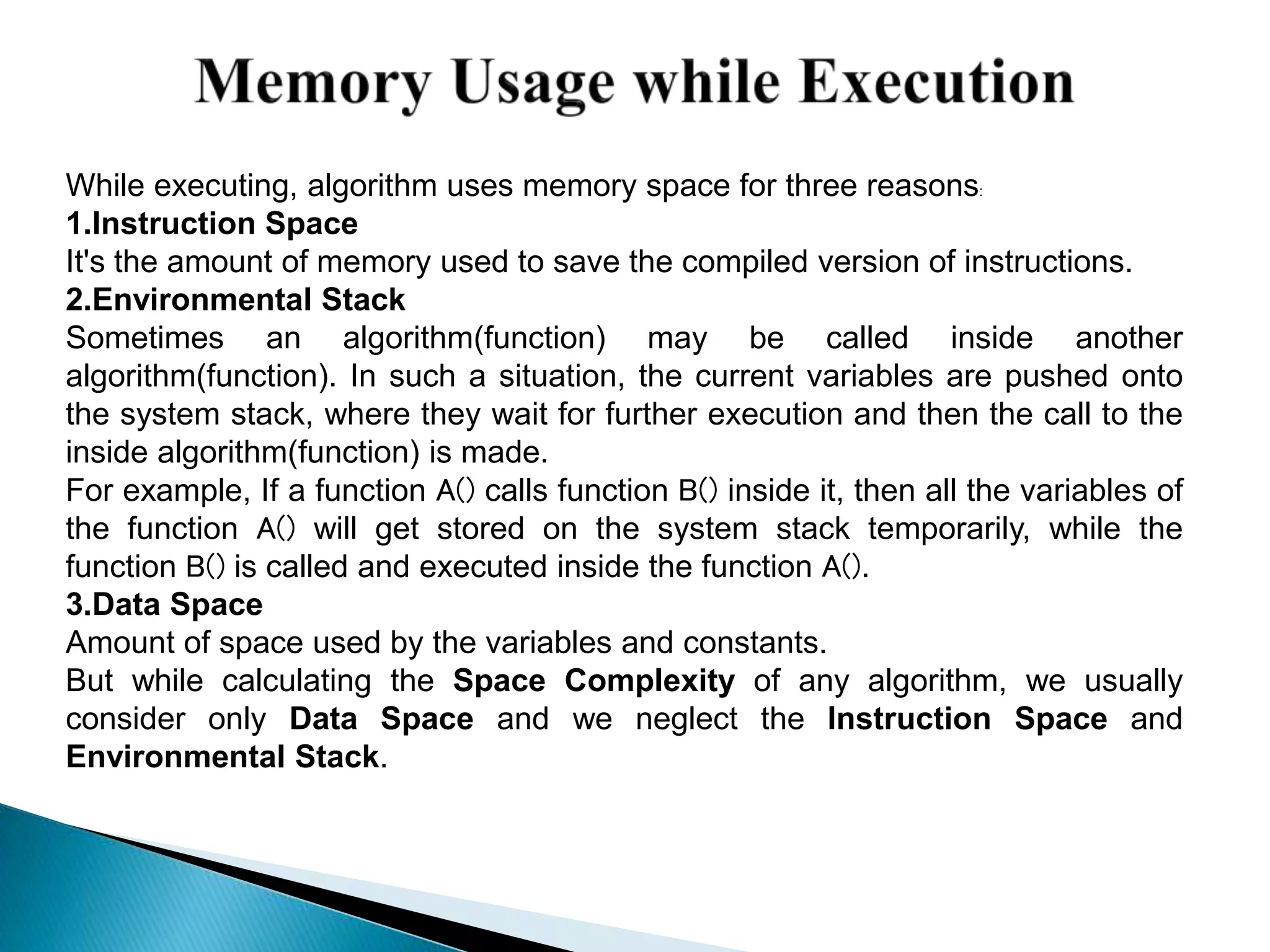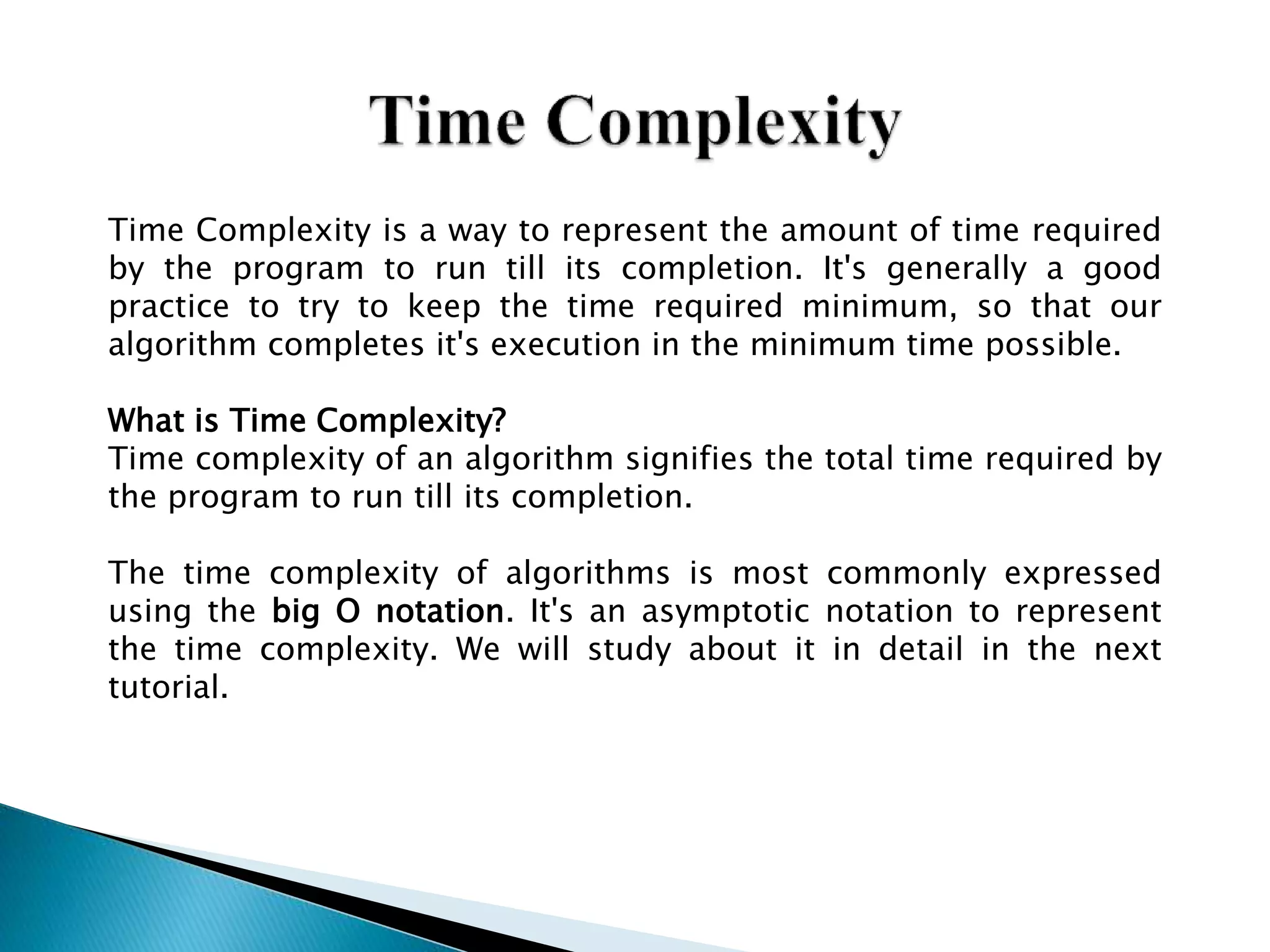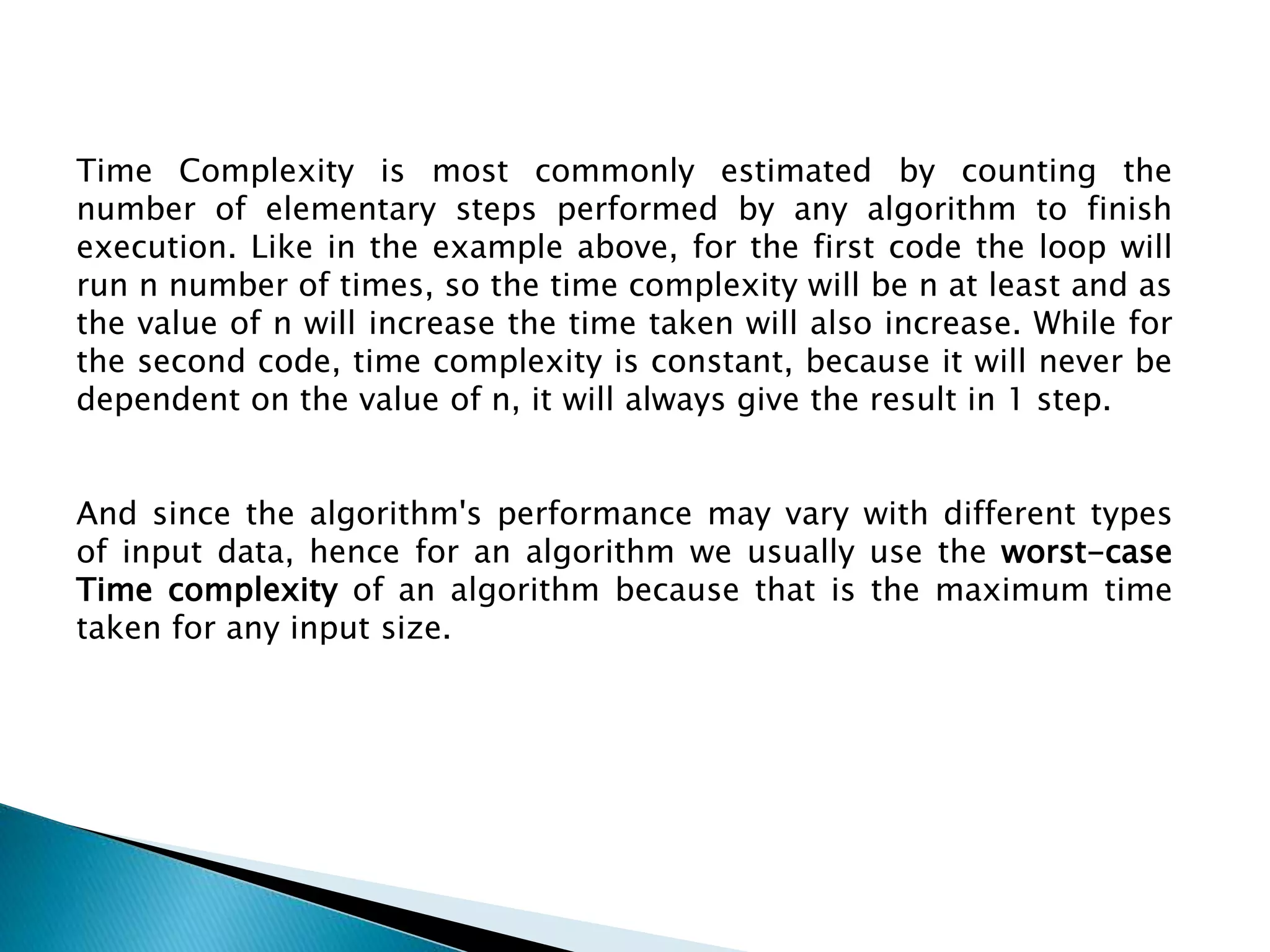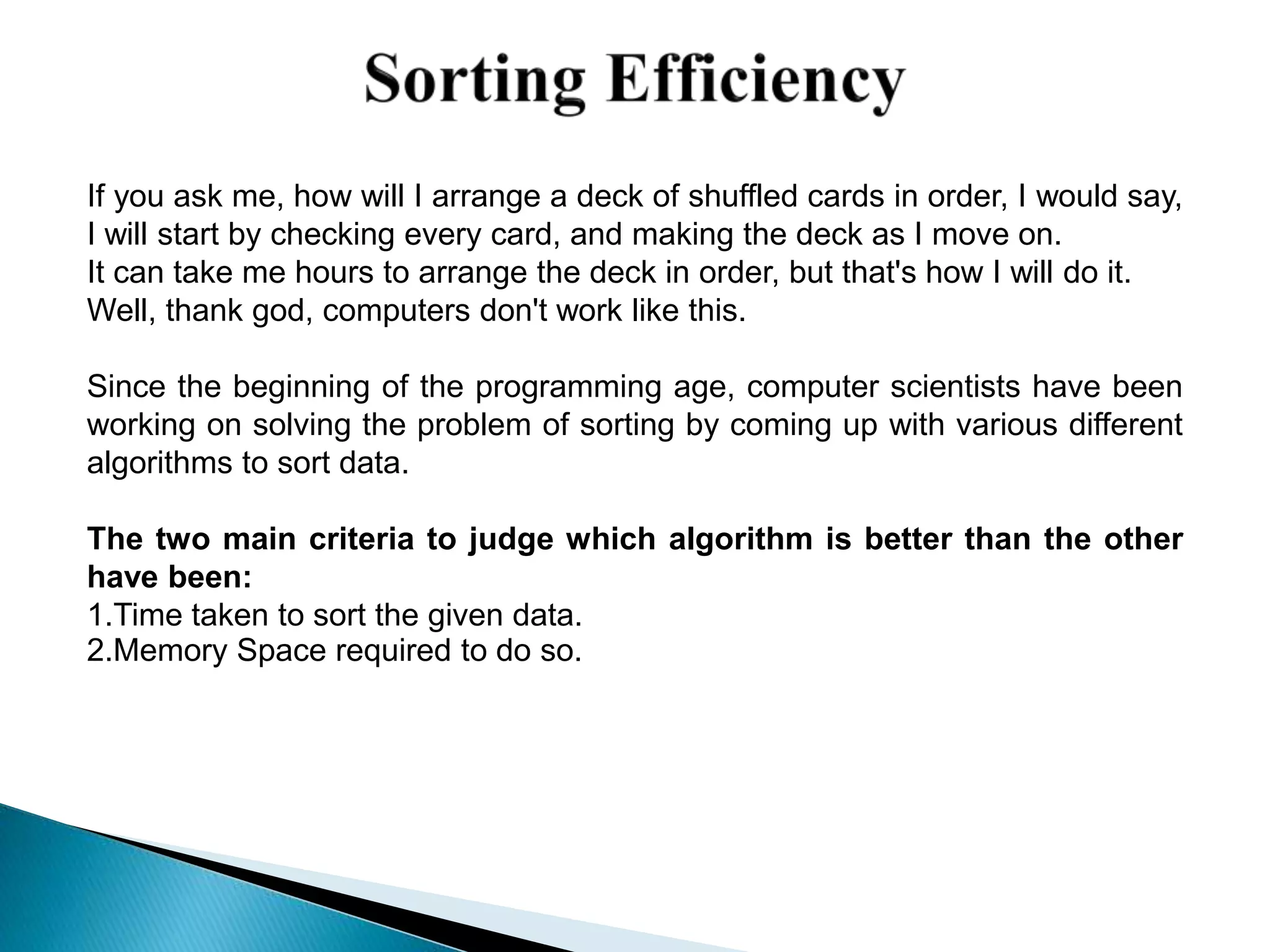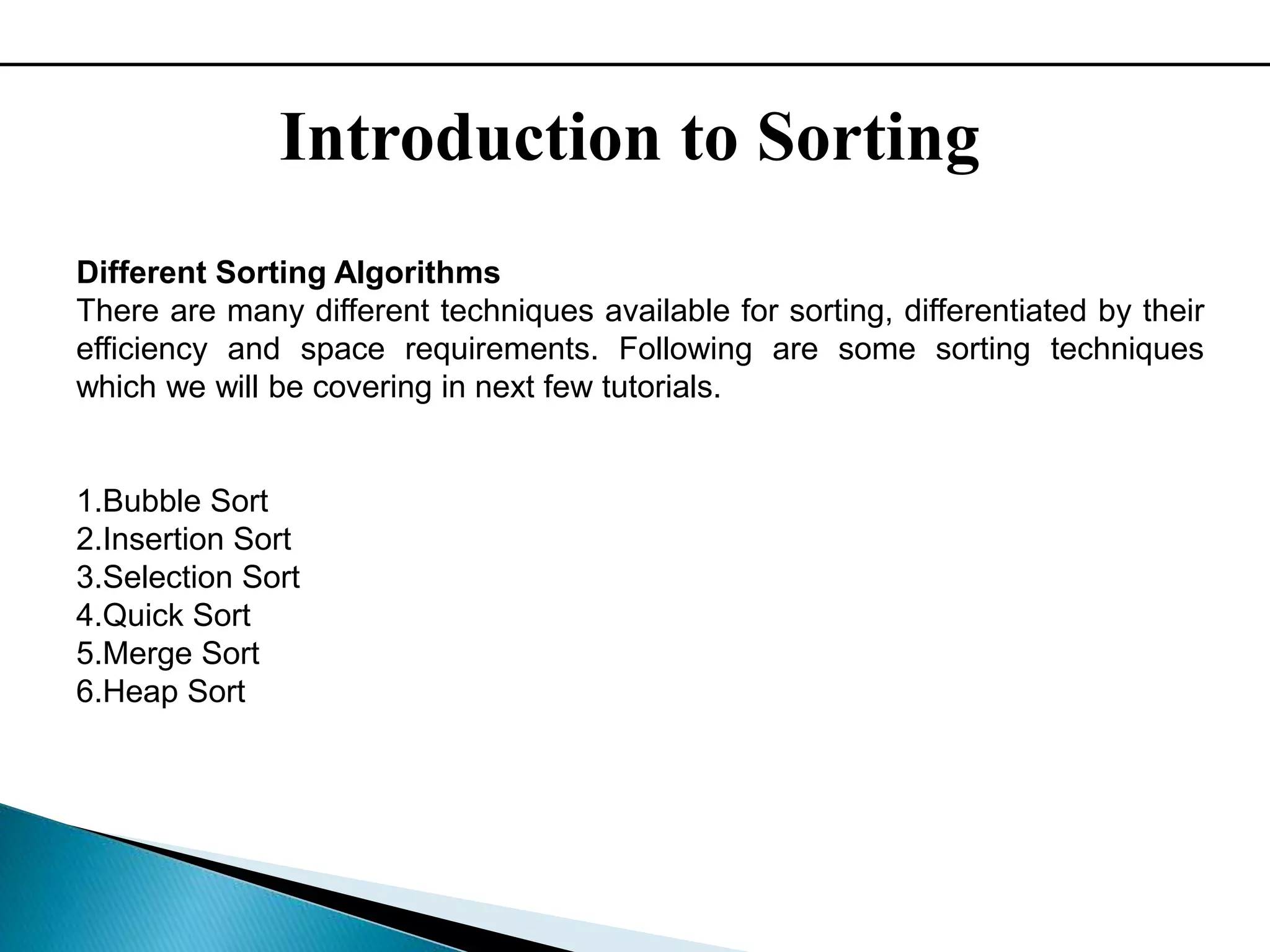Data structures allow for the organization of data to enable efficient operations. They represent how data is stored in memory. Good data structures are designed to reduce complexity and improve efficiency. Common classifications of data structures include linear versus non-linear, homogeneous versus non-homogeneous, static versus dynamic based on whether size is fixed. Algorithms provide step-by-step instructions to solve problems and must have defined inputs, outputs, and steps. Time and space complexity analysis evaluates an algorithm's efficiency based on memory usage and speed.
